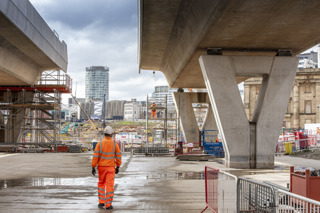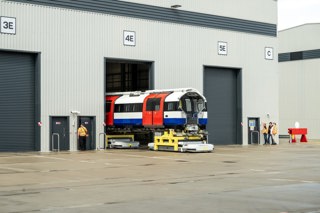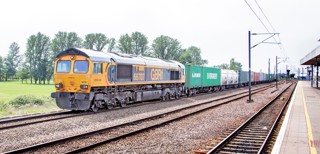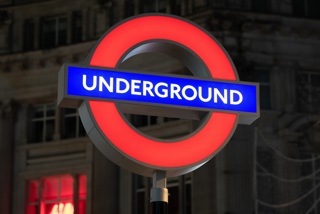 Read the peer reviews for this article
Read the peer reviews for this article
Is it going too far to read this as a battle for the soul of the railway?
On the outside, people might see that as poetic licence. But for those lost in the fog of war, it feels like that.
If the unions win, and a second member of staff is guaranteed on every train that has one today, their power over the rail industry will be significantly enhanced. But if the unions fail to halt what Govia Thameslink Railway calls the modernisation of working practices, the rest of the industry will follow GTR’s lead.
The railway is one of the last industries in which the workers can regularly bring management to heel by withdrawing their labour. So what is happening on services from Victoria and London Bridge matters to the wider trade union movement, too.
The repeated failure of talks at the independent conciliation service, ACAS, shows the complete breakdown of trust between the employer and its employees. And the customers no longer trust any of them to play nicely together. In any other industry, the customers would take their business elsewhere and the firm would go bust. Here, they have no choice.
The unions have ruthlessly exploited this weakness to their advantage. Govia Thameslink Railway employs 6,500 staff. On strike days, the 300 conductors who voted for industrial action wrecked the journeys of 100,000 passengers. They upset not just those who travelled on cancelled trains, but also those whose services still ran, but ran intermittently and wildly overcrowded.
The public perception is one of a battle about who pushes the button that opens and closes the train doors. But there are several separate actions by three unions across a range of related disputes.
Twice GTR has been to the High Court to obtain injunctions to prevent industrial action by ASLEF drivers on Southern and Gatwick Express. Now the drivers have held a fresh ballot to try again.
More than 1,000 platform staff belonging to the RMT have voted to strike over the proposed closure of some GTR ticket offices. Staff who work in them are to emerge from behind the glass screens and instead be known as Station Hosts. TSSA members have held a matching ballot. The company says this is being done because most tickets are no longer sold at ticket offices.
Meanwhile, the dispute by RMT conductors has raged unabated for nine months. Co-ordinated action by the three unions in four disputes can stop GTR in its tracks.
Intemperate language
For months, the RMT and GTR seemed incapable of sitting around a table to hold civilised discussions about modernising working practices. Instead, they traded increasingly intemperate insults through the media, seemingly oblivious to the unravelling lives of commuters. Passengers have lost jobs as a result of this dispute. Somehow the protagonists have kept theirs, while accusing each other of lies, sabotage, political manipulation and worse.
Each side has a line in the sand. Neither will step across. For months there was no movement, but then August brought progress. The RMT said it would at least discuss whether the driver might operate the train doors instead of a guard. But under no circumstances would it sanction a train having fewer crew than today - every train that currently carries a conductor must continue to do so, without exception. No conductor… no train.
The union was emboldened by a deal in Scotland. Faced with a near-identical situation, ScotRail promised to keep a guard on every new train in return for talks about who should control the doors. The company thus averted further financially ruinous strikes.
RMT General Secretary Mick Cash said: “We had a golden opportunity to make serious progress on the core issue of a second person on the train who would have protected the safety of passengers, delivered customer service and ensured access to service for those with disabilities or needing assistance. It’s a bitter blow that a firm set of union proposals were rejected out of hand.”
GTR Passenger Services Director Angie Doll said: “The RMT won’t agree to what most fair-minded people would believe is an incredibly good offer. We are guaranteeing jobs, pay, and a second person on as many trains as we do today, and also offered to work with the RMT to agree modern working practices to reduce cancellations and passenger disruption.”
Years in the making
Driver Only Operation has been in place for three decades. There is no substantive evidence to suggest that it is in any way unsafe, nor any evidence that it is less safe than having a guard responsible for train dispatch.
An entire generation of trains has been built to be capable of DOO, including nearly all rolling stock used by GTR. But on this franchise the controls in the cab have been left unused. Southern’s Electrostars are approaching mid-life without the driver’s door buttons ever having been pressed. Industry-standard kit, fitted in case of a change of heart or a cascade to different train operators, has gone to waste.
It can be argued that the RMT and ASLEF unions have therefore been fighting a change in technology that has always been inevitable. It mirrors a union battle half a century earlier, which dragged on for years. That was about removing a second crew member in the cab. They were called firemen in steam days, and some survived as secondmen after steam trains gave way to diesels. (That’s what the ‘F’ in ASLEF still stands for today.)
Southern provides the contractual environment in which this battle can finally be fought. As a management contract, rather than a standard franchise, the revenue risk lies with the Department for Transport. It can therefore withstand the financial consequences of a strike better than other operators. Some have even suggested it was set up with this partly in mind.
Look back to the start of the project originally called Thameslink 2000, in honour of its projected completion date. Even under British Rail, DOO was part of the plan.
In April 2008, then Secretary of State for Transport Ruth Kelly approved the draft Thameslink rolling stock specification. It was for DOO.
Govia took over Thameslink and Great Northern in September 2014, just ahead of the major engineering work at London Bridge. Southern Railway joined in July 2015. As this was already operated by Govia, it was a change of franchise conditions rather than a change of management.
Up to this point, Southern was generally regarded as a competently managed railway that under-performed mainly because of capacity, infrastructure and rolling stock constraints. It was run by much the same team as today. When it took over the Thameslink services from First Capital Connect, Govia found it had inherited a shortage of drivers. It had expected more than 650. It has 607.
Was FirstGroup at fault for failing to tell its successor that it had insufficient staff to operate the timetable? Was Govia at fault for failing to identify the problem during its due diligence process?
GTR launched a recruitment campaign knowing that the damage had already been done. The company says it takes 14 months to find and train each new driver. More experienced drivers also had to be used to train the recruits. At the same time, existing drivers had to come off the roster to re-train on Class 387 and then Class 700 rolling stock, using new simulators at Three Bridges. To make matters worse, drivers also needed time out to learn changing track layouts at London Bridge.
A driver shortage on Southern Railway is harder to excuse, given the continuity of management.
In the emergency timetable introduced in July, many of the 341 services a day being cancelled come from the DOO inner-suburban metro trains in south London. These were presumably unaffected by the industrial action by RMT conductors, or their “unexpectedly high levels of sickness” that both the company and the Government said amounted to unofficial industrial action. The RMT estimates Southern was also 50 conductors short of a full team.
Filling the Sunday roster with voluntary rest day working is standard practice in the industry. Drivers on a 35-hour, four-day week get extra pay at overtime rates. In return, management can employ fewer drivers, saving money with a smaller workforce.
But the changing nature of passenger demand means that today, Sunday services on GTR are not far short of weekdays in terms of service intensity. Drivers are well paid and the employee demographic has changed. More staff have young families and increasingly value time off at a weekend.
Add to that an unusually high level of staff turnover at GTR. Chief Executive Charles Horton told the Transport Select Committee that the annual figure was currently 5.6%, compared with a historic figure of 3.4%.
GTR services have also been prone to frequent infrastructure problems. Prior to the current dispute, the franchise area was the source of half the total number of delay minutes attributable to Network Rail in the entire country. Almost daily signal failures have continued to wreak havoc.
GTR services are also particularly prone to reactionary delays. When something goes wrong on Southern or Thameslink, there are almost always knock-on effects. Like the runways at Heathrow or Gatwick, the network is so busy there is little margin for error. Flat junctions, a lack of platform capacity and minimum headways mean that the slightest failure can have an impact that lasts all day.
At East Croydon, Up Slow trains all use Platform 4. An overcrowded train may have a scheduled dwell time of one minute, but a packed short-formation train or a large group of travellers with suitcases can easily double that time. A service that arrives on time then leaves a minute late, with the next two trains already queuing outside.
So the industrial action has been perhaps the final straw that broke GTR’s back. Govia promised a transformation of the passenger experience, and is contractually committed to providing it. It thinks a reform of outdated working practices is at the centre of this.
The future of GTR
It was always a tall order. The DfT knew it - that’s why GTR was created. Competing business units would no longer bicker with each other during the years of upheaval at London Bridge. The unquantifiable financial risks of disruption would be neutralised by a simple management contract.
Even before it all started, this was the poorest-performing passenger rail service by almost any measure you choose. Govia therefore reckoned on enduring a few rough years before eventually emerging into the sunlight with happier passengers towards the end of the contract, and an enhanced reputation that would help to secure future long-term deals.
But it hasn’t turned out that way at all - at least, not yet. The corner is a long way from being turned. GTR’s public reputation lies in tatters, comprehensively trashed by months of truly abysmal service that is unacceptable on any level.
Politicians, passengers, consumer champions and pressure groups are all howling for the failing company to be stripped of its contract, for its executives to be sacked, and for a public sector replacement to be given the chance to repair the damage.
Govia’s shareholders must be quietly regretting ever signing on the dotted line, even if their greatest offence has only been to attempt to carry out the DfT’s wishes. They have been hung out to dry. New Transport Minister Paul Maynard has said the industrial strife is a matter for GTR to fix, not civil servants at his department.
Even senior executives at GTR do not expect the franchise to survive in its current form beyond 2021. It was structured as the UK’s largest train operator specifically to cope with the upheaval of completing the Thameslink programme - new trains, new tracks, new technology, additional routes, far more services and a completely revamped timetable. It was always destined to be broken up once the tasks have been completed.
But performance, stuck resolutely at the bottom of the National Rail Passenger Survey table, gives the impression of GTR being too big to handle.
And the succession of industrial disputes with all three unions - RMT, ASLEF and TSSA - show the company has failed to encourage enough of its own employees along its chosen path of change management.
Has the DfT demanded too much of GTR, on too many fronts and on too short a timescale? Might it have been better to pick a fight over staff terms and conditions at a more stable later date?
Over just four years, the company has to transform customer service, reform employment structures, replace ticket offices with vending machines and a reworked website, introduce four new fleets of rolling stock, launch new journey opportunities never previously offered to passengers, rewrite the timetable, and cope with one of Network Rail’s largest and most disruptive engineering projects.
The Go-Ahead Group, which has the largest stake in Govia, has already told shareholders that it will make at best 1.5% profit across the seven-year concession. It lost money last year and seems certain to repeat the performance this year.
It must be concerned that this could have an impact on its chances of winning further franchises. Imagine the howls of protest from passengers in other parts of the country if they think the level of service experienced in Sussex and Surrey could be heading their way.
So should the train set be taken away and given to other people to play with?
London Mayor Sadiq Khan has twice called for GTR to be handed to Transport for London. In a letter to Secretary of State for Transport Chris Grayling, he said TfL could deliver a better product by “immediately assigning an experienced team to fix the service”.
TfL would be operating a contract that will soon run from Southampton and Bognor Regis in the south to Peterborough and King’s Lynn in the north. Non-metropolitan stakeholders would take a dim view of that. TfL has no experience of running longer-distance services. It is almost certain that South London Metro services will be handed to TfL next time the franchise is redrawn, but the DfT seems most unlikely to hand over Britain’s biggest passenger franchise as a whole.
If the DfT were to take over, who would be in charge? Directly Operated Railways is the holding company set up in July 2009 to run franchises should it be necessary to bring them into public ownership. It had a subsidiary, East Coast Main Line Company, which took over from National Express East Coast. This ceased operating when Virgin took over on March 1 2015.
Since then, the operator of last resort has been on pause. Consultants SNC Lavalin (formerly Interfleet) and Arup babysit the dormant business. In effect, the in-house company has been outsourced. The DfT decided that would be cheaper than maintaining a just-in-case team themselves.
SNC Lavalin Managing Director Richard George once ran Great Western and later joined the FirstGroup board. That was 20 years ago. But he also stepped into the breach when Connex South Central (now Southern Railway) was stripped of its franchise. So he has previous experience.
“He’s a really bright leader but I don’t think he would be expected to run it himself,” said the boss of another train operator. “Even handing back to the state, franchise changes take months and he would put a team together. SNC Lavalin’s experience is reasonably current and they could choose who to keep and who to dispense with in GTR management.”
Running GTR could reasonably be viewed as one of the most challenging jobs in the rail industry. George would not take over himself directly - he would find a small team of senior people to take charge, perhaps as few as four or five executives. All the other staff would remain in place, as they are employed by Govia Thameslink Railway and not by the parent company, Govia.
The other train company head said: “If I was at DfT I would take it off Govia and break it up into Great Northern, Thameslink and Southern, with TfL taking the Great Northern and Southern inner services in due course. But I don’t think DfT wants to be directly responsible for something that might not get better any time soon. With 30 DfT franchise managers, their fingerprints are over most things GTR have done.
“Backbench MPs want action, though. I suspect a costly fudge. Additional rolling stock to reduce crowding and a fares freeze for 2017 - easy, as DfT holds the revenue risk. Then a firm commitment to transfer the ‘inners’ to TfL, Cambridge fast services to Virgin East Coast and restoration of a separate Southern/Gatwick Express.”
Unions’ future at stake
“This is not about pay or jobs,” the RMT has repeatedly stated. “Our members are taking strike action and losing pay because they are concerned about passenger safety.”
But the rest of the industry is clear that this argument does not stand up to scrutiny. Over the past decade, the number of fatalities and injuries across the network has fallen by 15%, according to RSSB. Most of those fatalities have been caused by people trespassing. The vast majority of injuries are from slips, trips and falls at stations. The actions of train conductors have very little bearing on these figures.
The RMT claimed a “massive mandate” for action. Among the 393 Southern conductors who were balloted, 306 voted to strike. So there was indeed a strong mandate among the 6% of GTR staff involved. The strikes halted 900 trains a day.
The strike ballot took place before the new Trade Union Act came into effect. This states that strikes can only go ahead on a turnout of at least 50% of those balloted. For “important public services” unions must ballot “all eligible members”.
Keeping a ballot to a small group of key workers, slicing and dicing their membership, unions are not finding these new restrictions arduous. Look at the separate strike ballots on ScotRail, Virgin East Coast and the four separate ones on GTR. At Eurostar the RMT ballot over a better work-life balance for train managers was conducted among just 80 staff.
Yet despite the impressions that strikes are breaking out all over the rail network, industrial action is rarer than it used to be.
In 2015 the number of days lost to labour disputes was 170,000. That compares with 788,000 in the previous year. 2015 was the second least disruptive year since records began in 1893. Over the past 20 years the popularity of strikes has collapsed. In the 1980s it was common for a million working days a year to be lost.
Alongside the decline in strike action, union membership is waning. Perhaps that’s because workers no longer clamber down dangerous mine shafts or work in shambolically-run factories operating machinery unchecked by safety experts. Workers are now more likely to be sat at desks or operating pristine computer-controlled equipment. They can make use of extensive employment laws to seek redress when something goes wrong, or change job more easily than in the past.
The current rail disputes are not about wholesale job losses, nor are they about bringing home enough money to pay the rent and put food on the table. The strikes are about alterations to working arrangements.
Or are they? This is also about unions trying to remain relevant in a changing world. Transport is one of the last industries in which most workers routinely join a union, and where colleagues take issue with those who choose not to do so.
The unions realise that campaigns about money aren’t as necessary as they once were. Train crew are well paid and work short hours. A driver with a few years’ experience and doing voluntary overtime can take home comfortably more than the head teacher of a primary school, an air traffic controller or the pilot of an Easyjet plane - all of whom will have university degrees and postgraduate training.
Driving a train is no longer what we used to call a blue collar job, but one that appeals to people who consider themselves professionally qualified, well above middle income and undoubtedly middle class. There are probably more than a few RMT and ASLEF members who quietly voted Conservative and who wanted to remain in the EU.
So the unions have a fight on their hands to remain useful to their members. GTR keeps on saying there is plenty of well-paid work for any employee who accepts its new conditions.
If GTR wins, expect similar conditions to be a requirement of most future rail franchises. Expect more train doors to be operated by drivers. Expect on-board staff to be about customer service rather than about train dispatch.
If the unions win, expect their role in the industry to be entrenched and their influence increased. Unions exist to protect the jobs, pay and working conditions of their members, and it’s fair to say that on the railway they have excelled at it.
If trains can run without a guard, the RMT loses one of the most important weapons in its armoury during a strike - the ability to stop the service. So if the RMT loses The Battle of Southern Railway, its standing will be significantly weakened. The stakes could hardly be higher. Meanwhile, pity the poor passengers, their stressful and disrupted lives apparently almost an irrelevance in what is turning into a battle for the beating heart of the railway.

The origin of the dispute between Southern Railway and the RMT lies not in whether trains are safer with a guard controlling the doors, but in an industry that has failed to keep pace with a rapidly changing world. While the industry structure has been revamped endlessly since privatisation, rail technology has changed little over the past 30 years.
Rapid employment growth in metropolitan areas, particularly London, has fired up a huge increase in passenger growth - primarily in commuting and business markets, but also leisure travel. And with a shift away from car ownership towards sustainable transport where sharing is hip, rail has a fantastic opportunity to capitalise on further growth. But it must adapt to cope with this opportunity.
Over the past two decades we have enjoyed the proceeds of growth, but failed to adapt quickly enough to cater for it. Punctuality is declining, passenger satisfaction stalling and peak overcrowding rising. The scale of growth we have experienced will stall without significant technological change. Customers want (and rightly expect) better punctuality and reliability, more frequent trains, and a seat on journeys over 20 minutes. Not only must the industry act now to meet current pressures, it has to lay the foundations for a revolutionary change in the future.
The industry has a vision of the future - the Rail Technical Strategy. Published in 2012, little progress has been achieved to date. But that is about to change, with a detailed roadmap due later this year showing how the industry can deliver it.
Driver Only Operation, first introduced for passenger trains in Britain by Sir Peter Parker in 1982, between Bedford and St Pancras, was rolled out extensively by BR up to privatisation. Since then, very few train operators have implemented it for fear of the industrial strife now playing out at Southern. But while the industry is embroiled in this dispute, the automotive industry is successfully testing driverless, battery cars that will be operating in convoys on highways very soon. This type of disruptive technology could supplant the need for trains if we don’t keep pace. We need to prepare not just for trains operated only by a driver, but also for trains that are fully autonomous, enabling closer running with much higher levels of performance so that rail can meet both the demand and passengers’ expectations.
Yet it is people who are at the centre of this dispute. This is a stressful situation taking its toll on those caught in the middle - passengers and staff. Passengers who want to get home to put their children to bed, or who worry about getting to work on time, are suffering real stress and anxiety. So while I have talked about technology, this dispute is actually about people: those who naturally fear for their jobs because of what the future may bring; and passengers who have supported the industry through an enormous period of growth, and who want better and faster services.
Now is the time for management, unions and Government to get behind the vision for rail’s future and start delivering it. The rail system of the future will have plenty of jobs, but they won’t necessarily be the same as today. As I start my fourth decade in the industry it’s clear to me that no one should assume they have a job for life. But the industry provides such a diverse range of opportunities it is possible to develop a lifetime career in rail.
There are always lessons to learn, especially with the benefit of hindsight. More time for communicating the changes on Southern’s network may have helped - introducing the changes after the infrastructure works at London Bridge have bedded in could also have eased the implementation of the new trains, but the scheme is already 16 years behind its original implementation date and the pressure to finish it quickly is enormous.
In the early 19th century stagecoach and canal barge businesses collapsed overnight with the advent of rail. It isn’t scaremongering to say history could repeat itself if we don’t move with the times. As an industry, with unions and management working together, we need to stand back from the micro-detail of the current dispute and think about how we ensure the rail industry develops and survives. If passengers have an alternative, we want and need them to choose rail.
We may currently be behind the curve in embracing technological solutions, but if we use the real strength of the industry - its people - the future is bright. The industry is full of passionate, committed and dedicated people. If we turn our combined energy and effort into delivering the Rail Technical Strategy, we will provide the capacity needed and meet passengers’ expectations, while creating jobs and career opportunities. We can secure the future of the industry for generations to come.

Many commuters in London and the South East may currently feel like their train journeys are ruining their lives. Continuing disruption, a temporary emergency (reduced) timetable, sinkholes and heatwaves all contributed to a summer of discontent. Add in the public relationship breakdown between industry and unions, and it’s no wonder that trust has been eroded. So what can be done?
Passengers will welcome the recent appointment of a ‘hit squad’ – we hope to see it produce an honest, realistic plan that leads to a return of reliable services. Importantly, this must be done in public. There is already an ‘improvement plan’ for the sector, but we passengers have no way of knowing how the railway is performing against it. This openness is a key factor in rebuilding trust. Back in 2014 we explored passengers’ relationship with the rail industry. Given the billions being invested in the network, passengers’ perception of the industry was already unflattering.
There are three elements to a good relationship: service (getting the day-to-day performance right, providing helpful staff and value for money tickets); relationship (clear, accurate, timely information provided proactively to passengers); and judgement (being seen to show good leadership). So how is the railway performing on these other aspects while performance is poor?
Social media provides a constant stream of timely feedback that could be put to good use. To capture this data in a useful way, we asked passengers of Southern and the wider Thameslink network to use our travel diary app. Because this prompts users to record their experience every journey, we get a sense of their overall experience rather than just the times they are annoyed enough to vent on social media. It also helped us to show to the operators the ‘human’ side of disruption - the impact in real life of cumulative shorter delays or poor information.
Some of the comments included:
“Having only one service an hour into Brighton available makes the commute to work rather stressful - missing the train by a few minutes makes me over 60 minutes late to my client in Hove.”
“One impact of the new timetable is that I have stopped making many trips for leisure purposes. I know that I’m not alone in this. That might not seem as critical as journeys to work, but this must hit businesses in the leisure and tourism sector.”
“Due to the special timetable with no London Bridge trains from my station, Thameslink trains are too crowded to board. Again made the three-mile trip to Morden by bike, then took the Tube.”
Almost immediately we made two ‘wins’ for passengers from this anecdotal feedback: we told Govia Thameslink Railway that passengers were being sold tickets for services that weren’t running, so it was able to address the information given; and people were reporting Passenger Assist services not being ready or not turning up at all, so it put effort into sorting that out quickly.
While there is still no offer on the table for better compensation recognising the impact of sub-30 minute delays, we were pleased to see the operator offering enhanced compensation and actively encouraging passengers to claim for delays. It has reported a significant increase in Delay Repay claims, which we welcome.
We want to see the railway get back to ‘business as usual’ as soon as possible. But in the meantime, we also want to see:
- A one-off gesture to recognise the extreme problems faced up to now, such as a lump sum of compensation.
- Improved compensation from now on - preferably this would mean the immediate implementation of the Government’s welcome commitment to lower the Delay Repay threshold to 15 minutes.
- A fares freeze for season ticket renewals.
















Login to comment
Comments
No comments have been made yet.